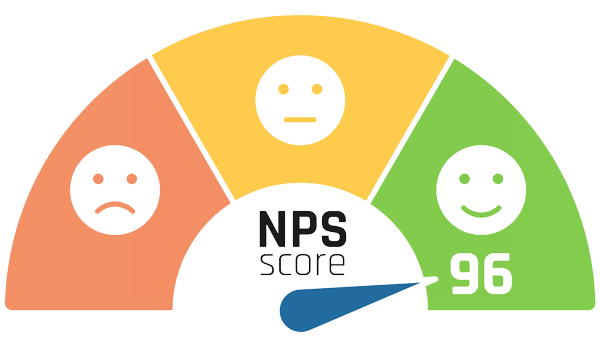
Not all metrics speak for your customers—NPS does.
Net Promoter Score is one of the few metrics that captures sentiment, loyalty, and brand health in a single number. But it’s often misused, misinterpreted, or siloed. When applied strategically, NPS becomes a powerful tool for aligning customer experience with business outcomes.
What Is Net Promoter Score?
NPS measures how likely your customers are to recommend your product, service, or organization to others. It’s based on a single question:
“On a scale of 0 to 10, how likely are you to recommend us?”
Respondents are grouped into:
- Promoters (9–10): Loyal enthusiasts who fuel growth
- Passives (7–8): Satisfied but unenthusiastic
- Detractors (0–6): Unhappy customers who may damage your brand
Formula:
NPS = % of Promoters – % of Detractors
Why NPS Matters
- Customer-Centric Strategy: NPS puts the customer voice at the center of decision-making
- Retention Signal: Promoters stay longer, spend more, and refer others
- Board-Level Insight: For nonprofits, NPS can reflect donor trust and mission alignment
- Brand Health: A declining NPS often precedes churn, negative reviews, or revenue loss
Strategic Questions to Ask
- Are we segmenting NPS by customer type, region, or product line?
- What’s our follow-up strategy for detractors and passives?
- Are we correlating NPS with churn, LTV, or margin?
- How does our NPS compare to industry benchmarks—and why?
How to Use NPS Strategically
NPS isn’t just a score—it’s a conversation starter. Use it to:
- Prioritize customer experience investments
- Identify friction points in onboarding or service delivery
- Align internal teams around customer feedback loops
- Model retention and referral impact on growth
Final Thought
Net Promoter Score is the metric that listens. It gives leaders a direct line to customer sentiment—and a chance to act on it. In a world of dashboards and data, NPS reminds us that loyalty is earned, not assumed.
Want to explore how NPS can sharpen your strategy or board reporting? Let’s connect.
This post is part of the Behind the Metrics series.
Explore others on CAC, LTV, ROAS, Conversion Rate, ROI, Churn Rate, and Gross Margin.